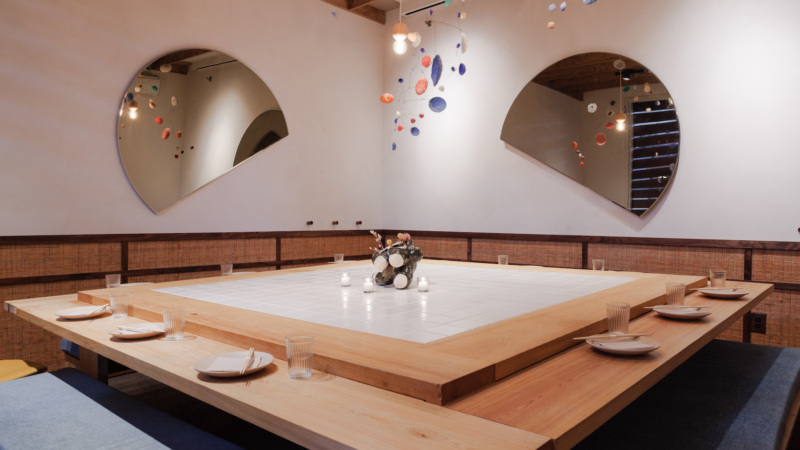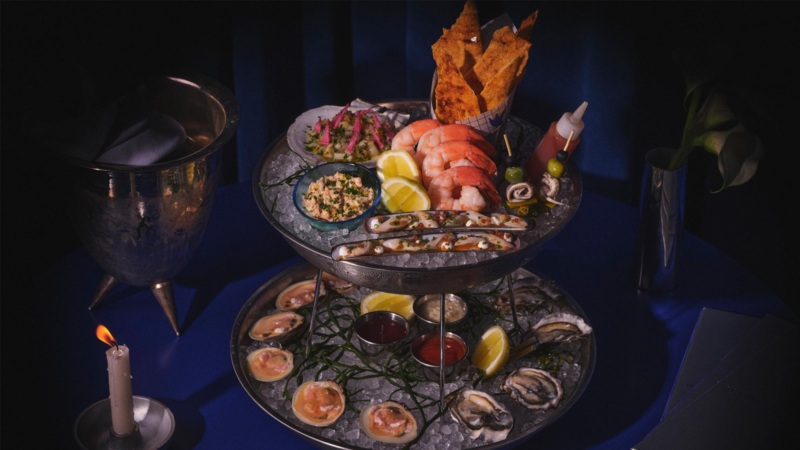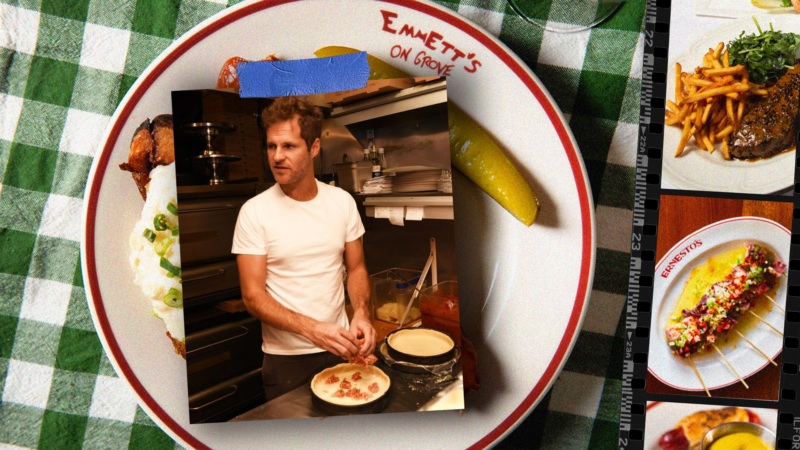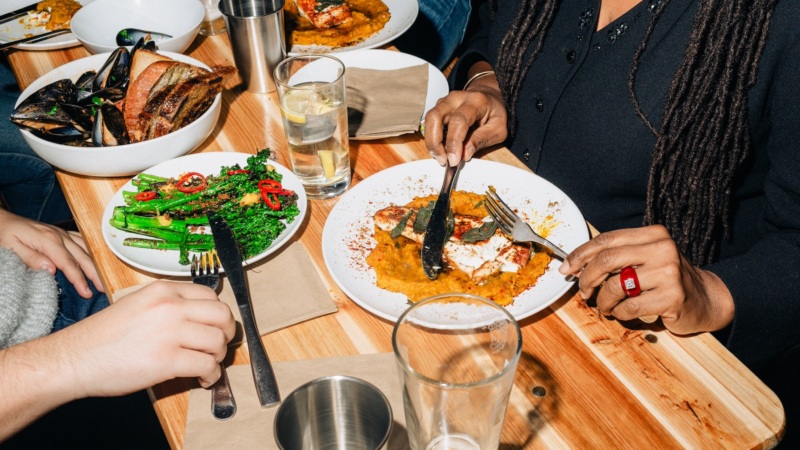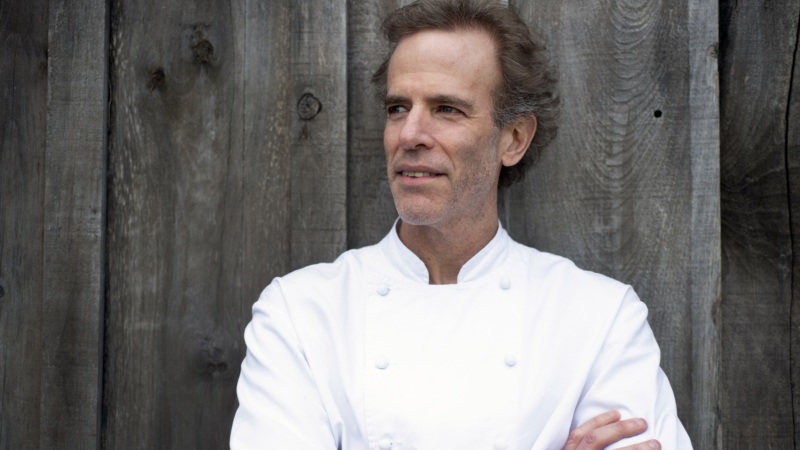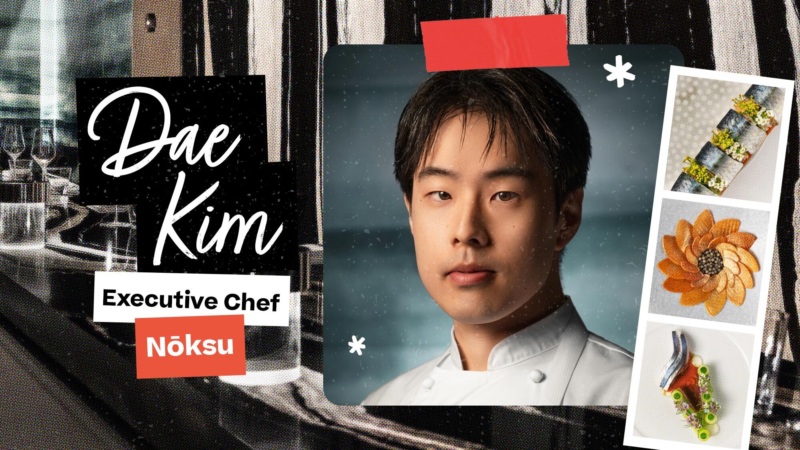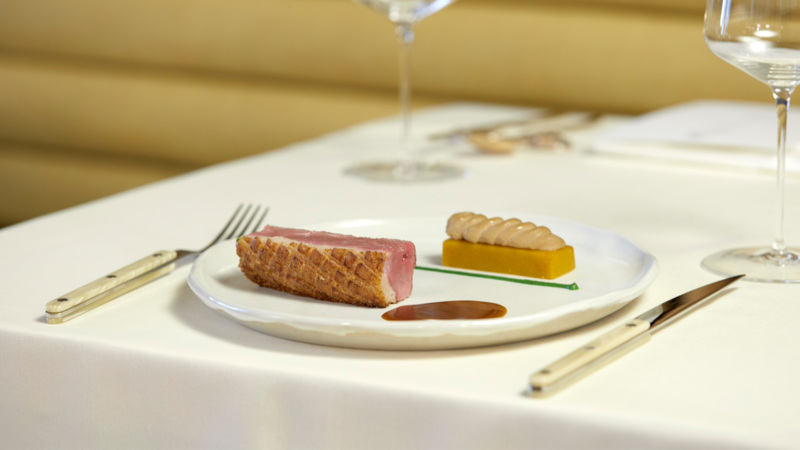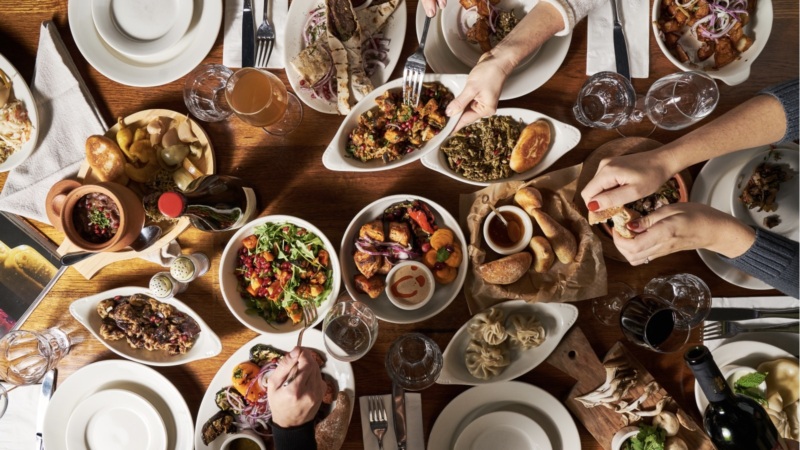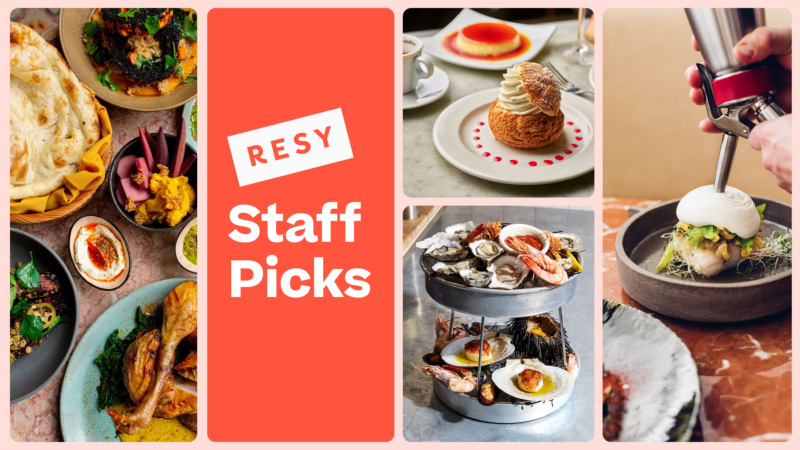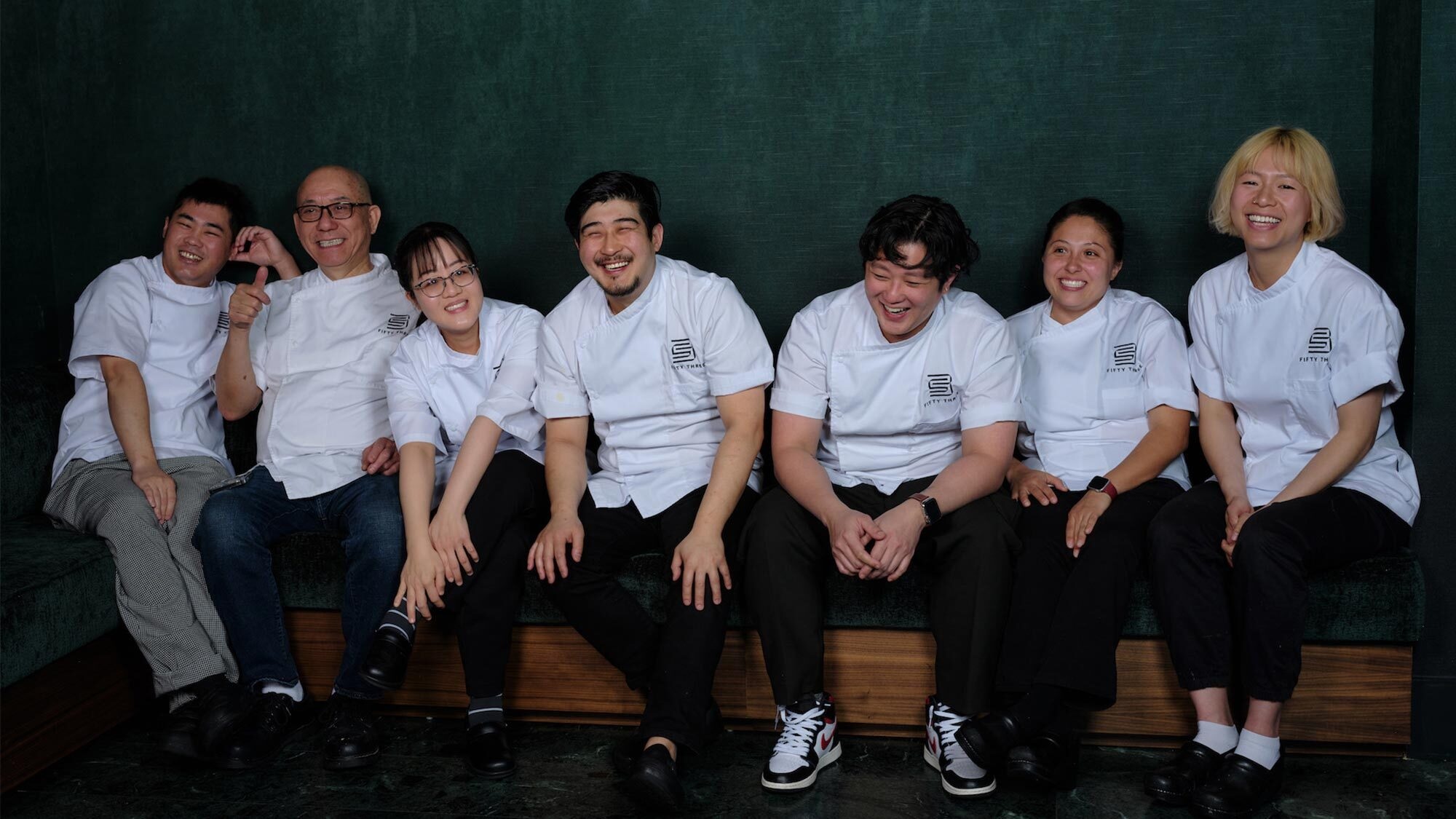
The Stories (and People) Behind the Menu at 53 in New York
What secrets lie beneath the surface of a restaurant menu?
Here, we’re paying a visit to 53, a sleek bi-level stunner of a restaurant in Midtown from the same group behind New York’s Marea and Ai Fiori, with a kitchen led by acclaimed chef and partner Akmal Anuar and executive chef Mark Yu.
53, which opened in June 2022, is the Altamarea Group’s first Asian restaurant and its menu features dishes that originate from Singapore and China to Korea and Japan. Likewise, 53’s kitchen team is just as diverse, and each individual staffer brings their personal cultural experiences and influences to their roles — and to the dishes they’ve helped to create.
Read on for a dish-by-dish deep dive into the menu with the staff at one of New York’s standout restaurants celebrating Asian and Asian American cultural traditions.
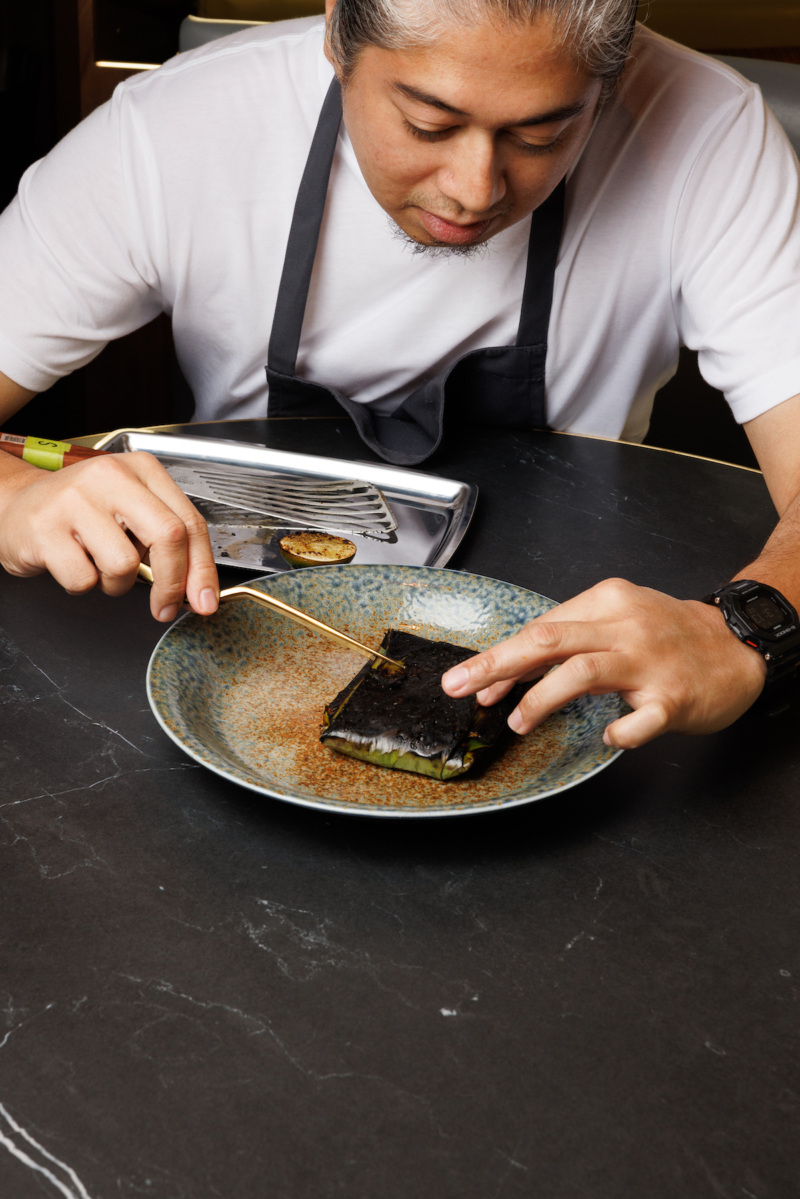

1. The 53 Backstory
The origins of 53 stretch back more than 20 years, when Altamarea Group founder Ahmass Fakahany used to travel to Singapore for business, and would dine at the iconic Iggy’s, where Anuar was head chef. In 2020, the two reconnected — Anuar had since left Iggy’s and moved to Dubai where he has a number of successful restaurants — and Fakahany asked Anuar to be a part of his newest restaurant project in New York.
Fakahany picked Anuar to help him with what would eventually be 53 precisely because of his skills and background: A native of Singapore, Anuar’s parents were hawkers, and he’s worked in a variety of top kitchens around the world. “Ahmass wanted to have a range of flavors, and … in Singapore, we have all the flavors of Asia in one country and multiple ethnicities, so the idea plays to that origin,” Anuar explains.
Bringing that original vision to life is a team of chefs who have origins from throughout Asia, and beyond, too. Because Anuar is still based primarily in Dubai, he enlisted the help of two of his former chefs — Adam Razali and Li Si Toh — to be his “right and left hand” in New York. They are joined by executive chef Mark Yu, formerly of Pastis. “It’s a collaboration through and through,” he says, of the entire team, who did most of the R&D for the restaurant out of the kitchen at sibling restaurant, Ai Fiori.
Anuar credits Yu for helping him understand the nuances of running a restaurant in New York, including finding the right team, local ingredients, and equipment. “Every one of these chefs and cooks grew up with these flavors in their homes from their youth like me, and this was an extremely important factor in the hiring process,” he adds. “We constantly asked, ‘What did you cook at home with mom and dad?’”
He adds, “I love it when it’s family meal at 53,” describing the daily pre-shift dinner that the entire staff enjoys. “Everyone takes turns to cook, and I get to eat so many new things. Last time, someone made birria tacos and it was so good; I’d never had birria tacos that were that delicious before!”
Most of all, though, Anuar wants diners to know that “53 is about inclusivity” of cuisines and dining occasions, from blowout celebrations to grabbing a quick bite for lunch near MoMA. Adds Yu: “We’re using influences from all parts of Asia: Korea, Japan, China, Singapore, Malaysia, Indonesia, Thailand. So, we have no limitations.” Not being bound to those traditions is what makes the menu at 53 so unique and, well, fun, and these are the stories behind a few of those dishes.
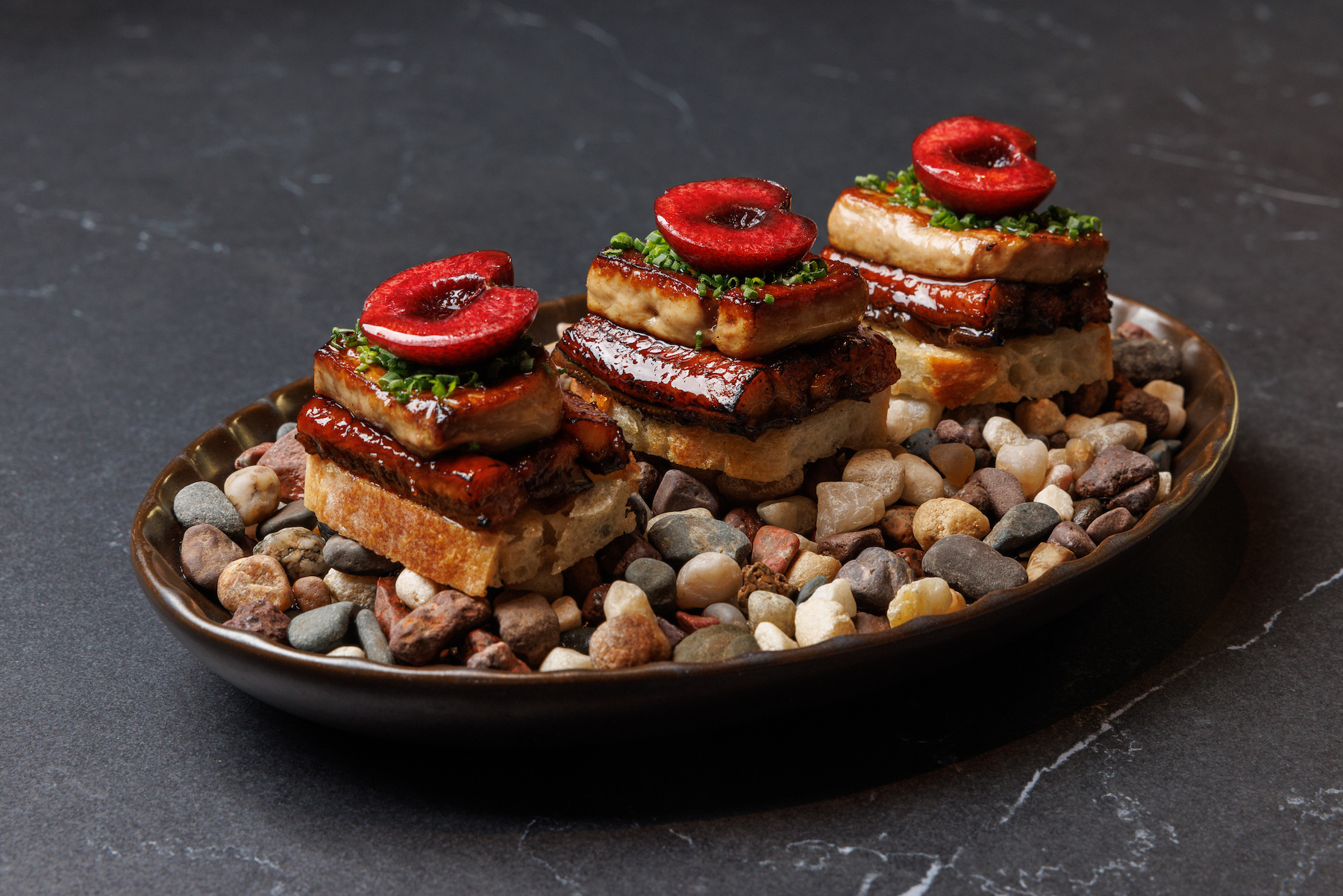
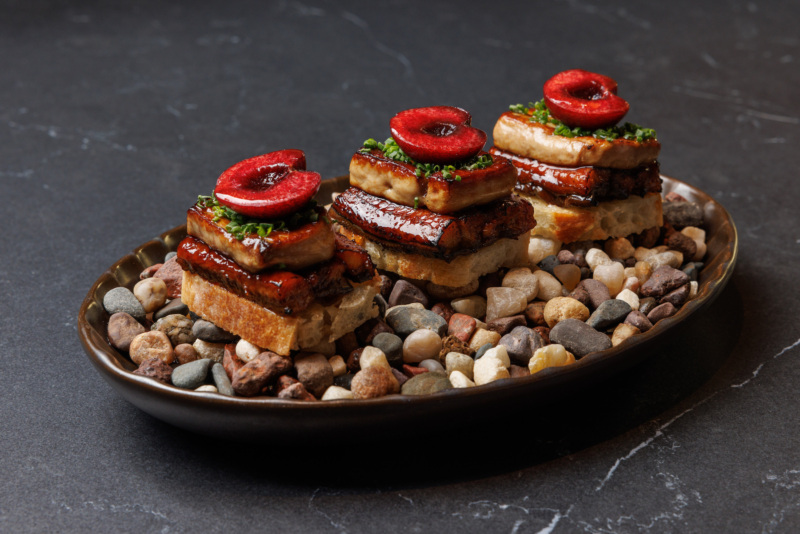
2. The One to Splurge On
Anuar says that if you really want to order a splurge-worthy dish on the menu, you should consider the eel club, which consists of barbecued eel, pan-seared foie gras, and a piece of toast, that gets topped with a peach, cherry, or fig, depending on whatever is in season. “It’s decadent and brings contrasts of Asia and Europe together in a land-and-seafood version all in one explosive bite,” he says.
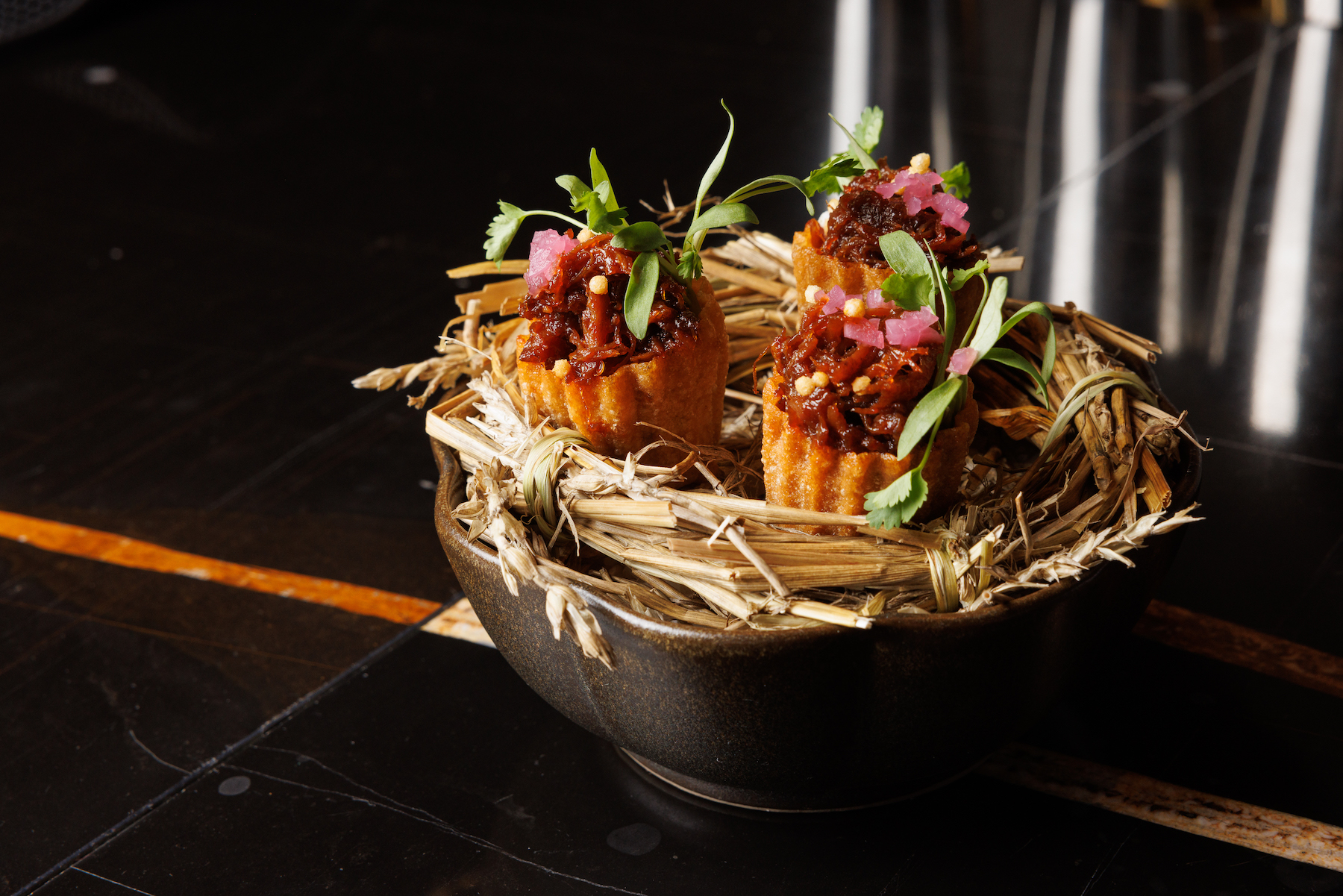
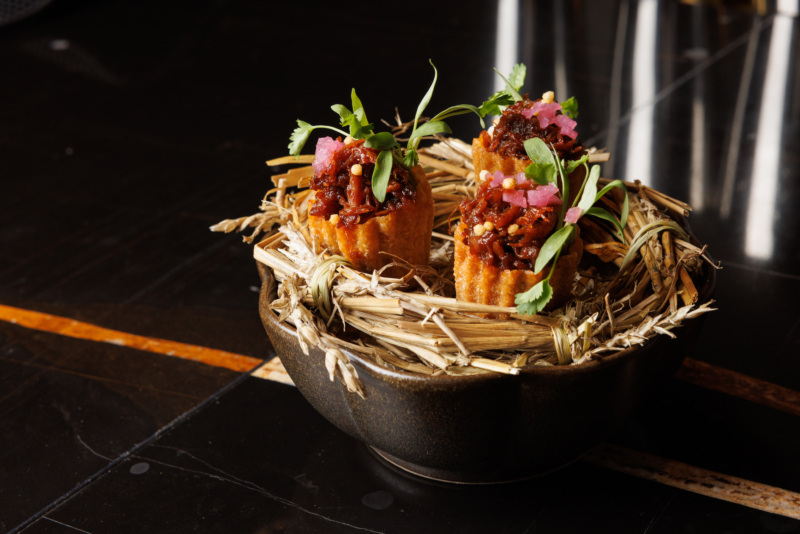
3. A True Cultural Exchange
Peranakan duck pie tee is one of 53’s most popular dishes and it’s also one that’s fairly labor intensive, involving a delicate pastry shell filled with duck confit. Traditionally, this Malaysian and Singaporean specialty is filled with shrimp and turnips (like what you might find at Kebaya), but 53 put its own unique spin on the dish, thanks in large part to sous chef Gabriela Esparza.
A native of Aguascalientes, Mexico, Esparza helped develop the dish during the R&D process by suggesting and testing out ingredients like masa flour instead of tapioca flour for the pie tee shell, as well as the addition of barbecue sauce, cilantro, pickled onions, and chipotle mayo for the filling. She originally joined the opening team at 53 as a line cook, but was promoted to sous chef in six months.
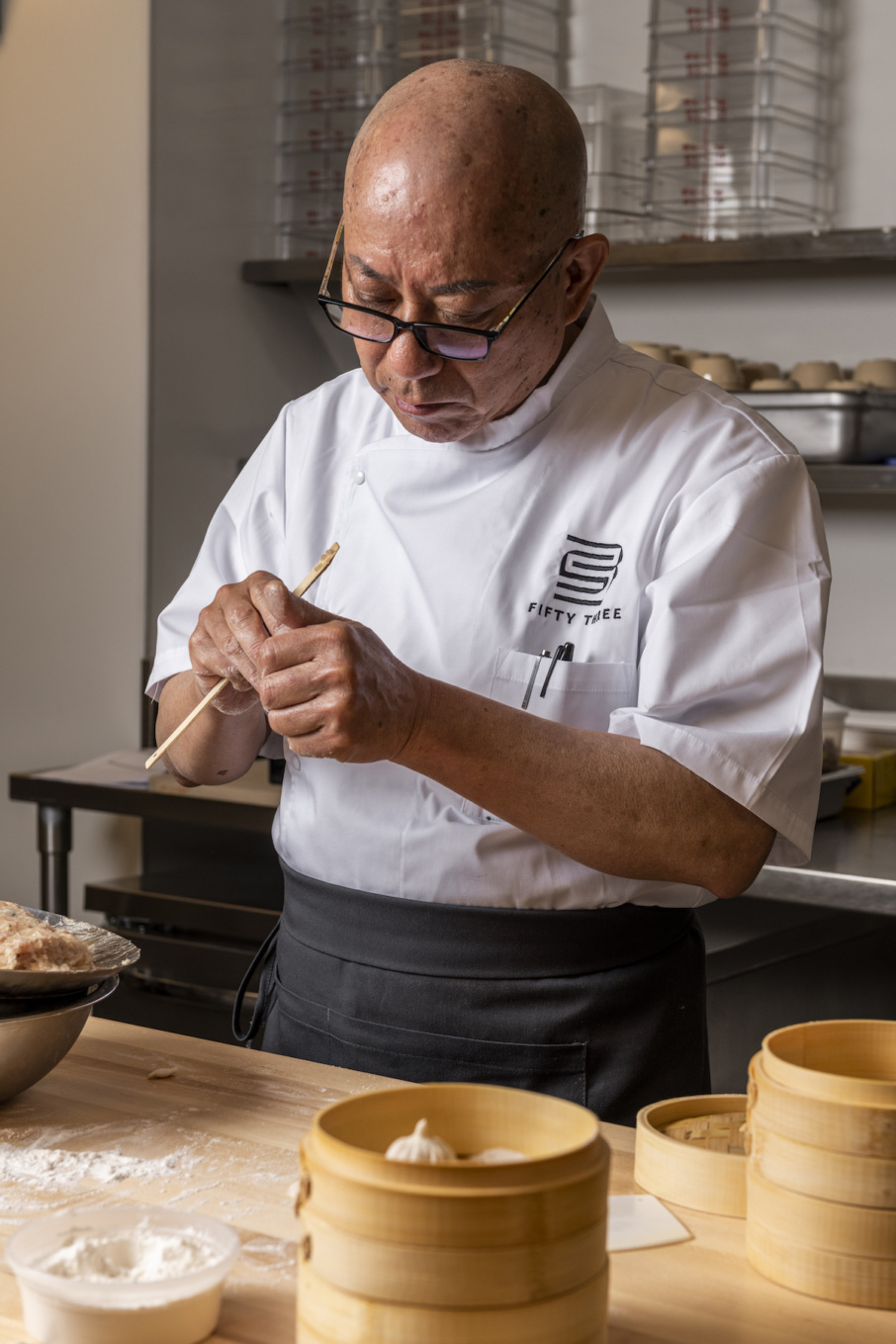
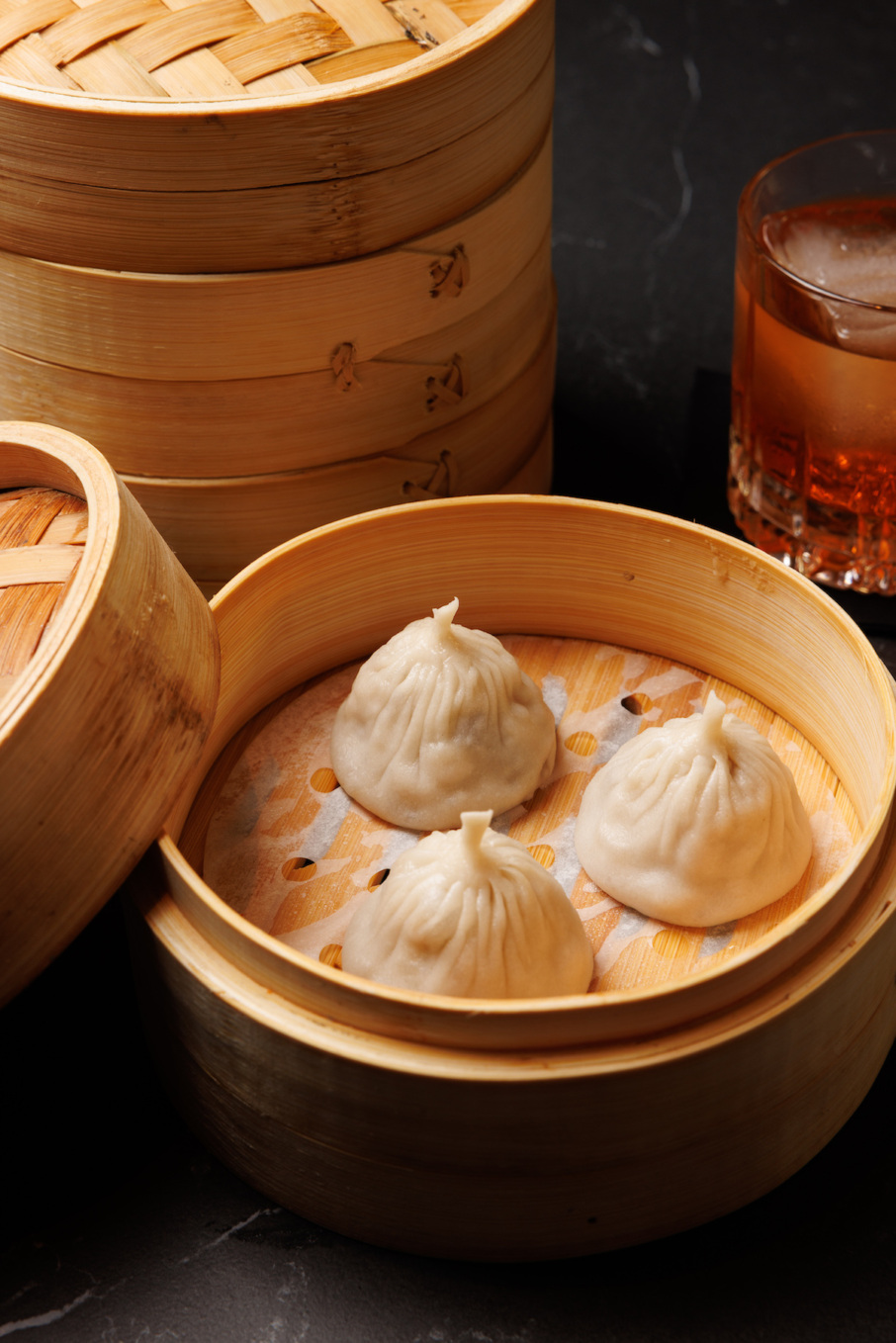
4. The Staff Favorite
If there’s one dish on the menu that the staff loves — and that diners love (it’s one of the top sellers) — it’s the xialongbao from dim sum master chef Yong Zhang. Whereas most places make xialongbao with shrimp, crab, or pork fillings, 53 makes theirs with chicken and Burgundy truffles, and it’s a standout dish because of how flavorful and delicate the soup dumplings are. That’s a credit to Zhang, a former chef at Hakkasan and Hutong, who moved to the U.S. in 2006 from Guangzhou, China, where he was a former mechanic and had a career working on cargo ships the world over.
Zhang, who started making dim sum full time in 2008, is a stickler for freshness; every day, he and his dim sum team of about four to six chefs make 600 or more pieces of dim sum for the restaurant from scratch. “I love to work on the dough and folding the dumplings,” he says, with corporate chef Li Si Toh translating for him in Mandarin. He adds that the key to being a good dim sum chef is “to be flexible and open to changes, and to be creative. Dim sum has to be beautiful and taste good, and it has to be made fresh.”

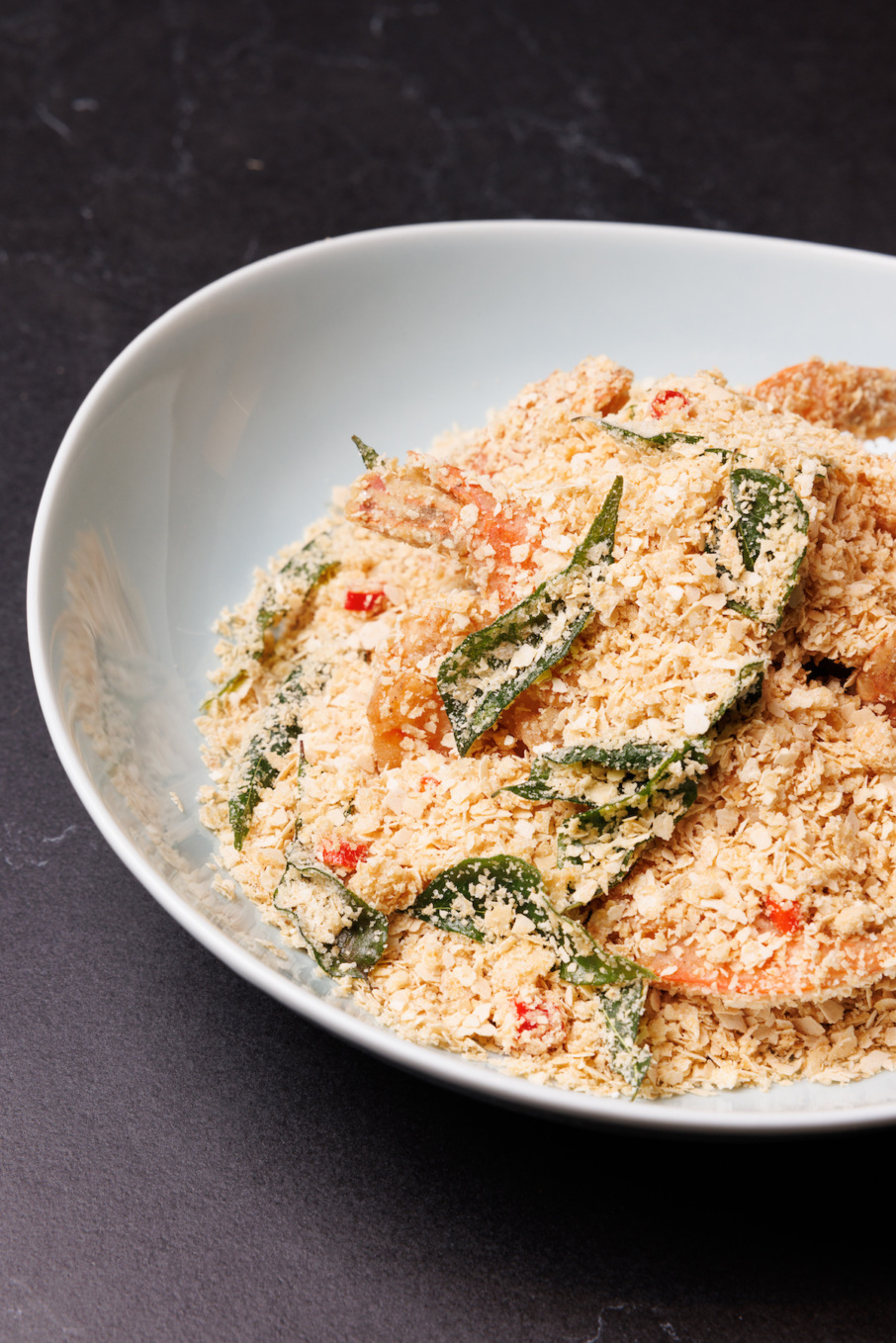
5. The Special Ingredient
One of the kitchen’s most prized ingredients — Nestum cereal — is the main ingredient of the cereal shrimp, a childhood favorite that Singaporeans grow up eating from Teochow food stalls. And it’s incredibly hard to get — the wait can be anywhere from three to four months for a shipment to arrive — so the restaurant has a hefty stockpile of it that they source from suppliers based in Singapore and Malaysia.
Corporate chef Li Si Toh, a native Singaporean of Chinese descent who worked with Anuar at his restaurants in Singapore and Dubai, grew up eating cereal shrimp. “It’s so savory and buttery and slightly sweet, and it’s really good together with rice,” she explains. Singaporean food, she says, is as diverse as its people, with influences from China, Malaysia, India, and Eurasia, and it’s in Singapore’s hawker center food stalls where you can taste influences from each.
To make the dish at 53, the shrimp gets marinated in a traditional Chinese mixture of cornstarch, egg whites, salt, and pepper before it’s added to a batter of seasoned rice and tapioca flour, fried. The Nestum cereal gets sauteed in butter with a bit of garlic, chile, and curry leaves, and then gets added to the fried prawns.
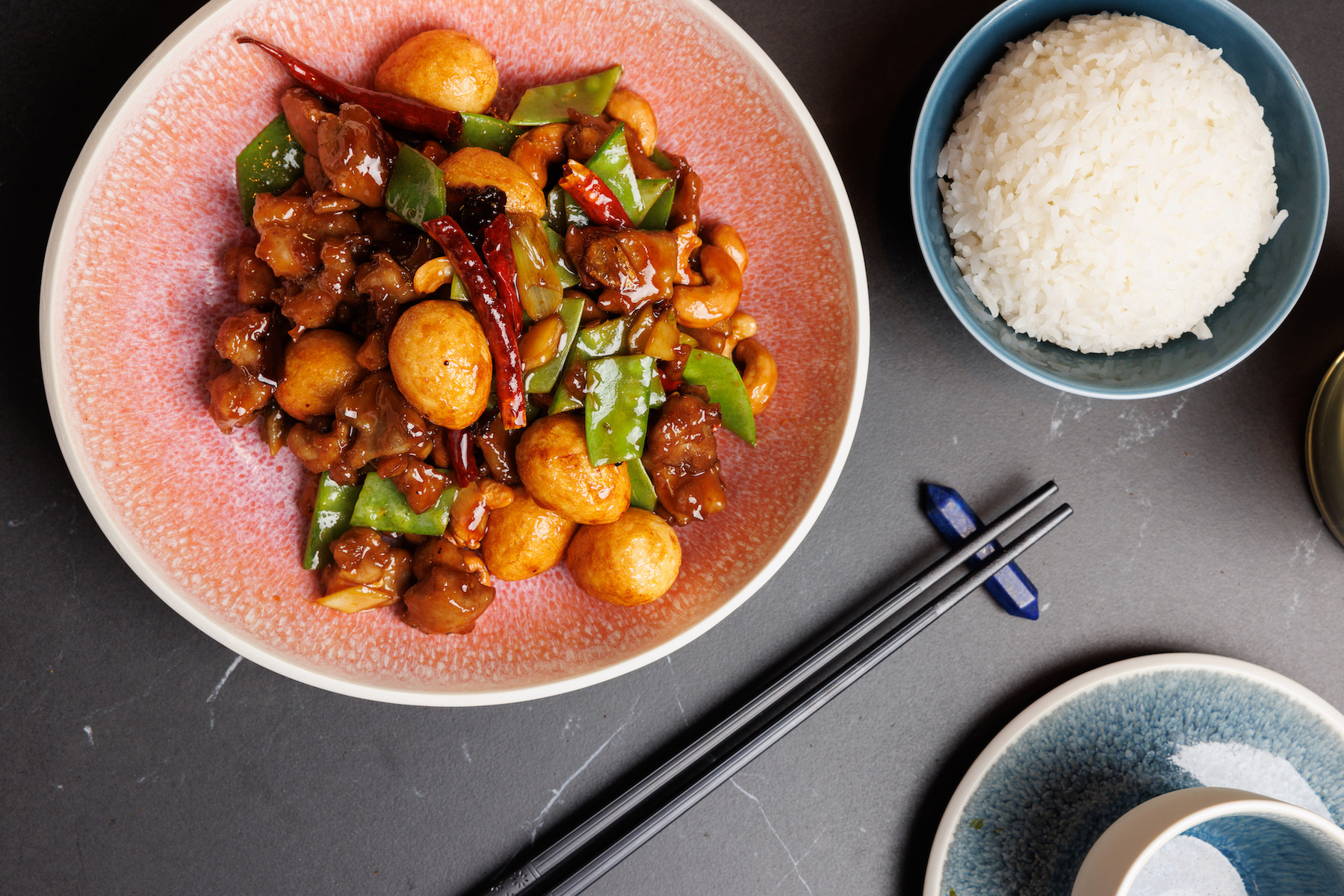
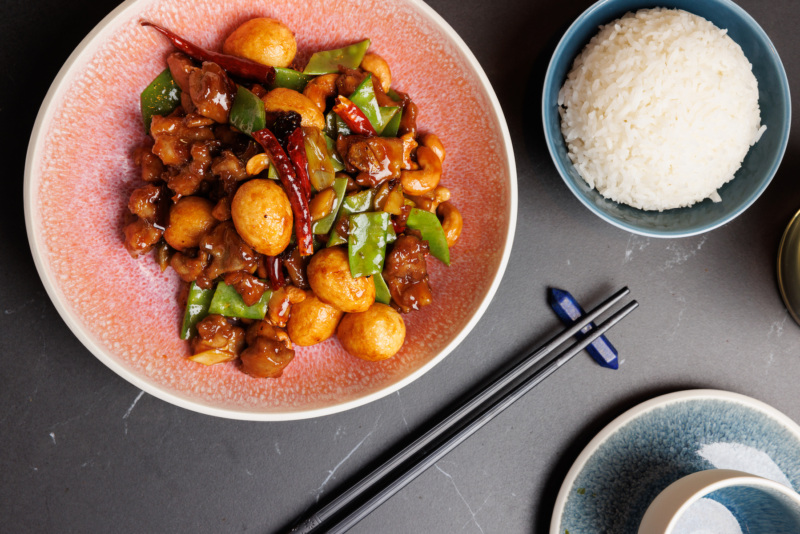
6. The Sleeper Hit
A large portion of 53’s menu is devoted to dishes cooked on the wok, and one wok dish that shouldn’t be overlooked is the kung pao quail, a twist on the traditional kung pao chicken, made with tender chunks of quail, snow peas, and cashews. Because it’s made with quail, it’s also a bit more time-consuming to make; quails are smaller than chickens and it’s tougher to chop them into the perfect bite-size pieces for the wok. The entire process of cooking the dish, however, is fairly quick: about five minutes in total.
Wok chef Vincent Qui says he has a soft spot for this dish because it represents the four tastes in life: sweet, sour, bitter, and spicy. “These four flavors represent a person’s life,” Qui explains, through Toh. Qui, a native of Guangdong, China, who moved to the U.S. 18 years ago, is the chef who oversees the entire wok section of the kitchen, and he credits fate with bringing him to 53, to be reunited with chef Zhang, whom he worked with previously at Hutong and other restaurants. “I cook because I want to make people happy,” he adds.

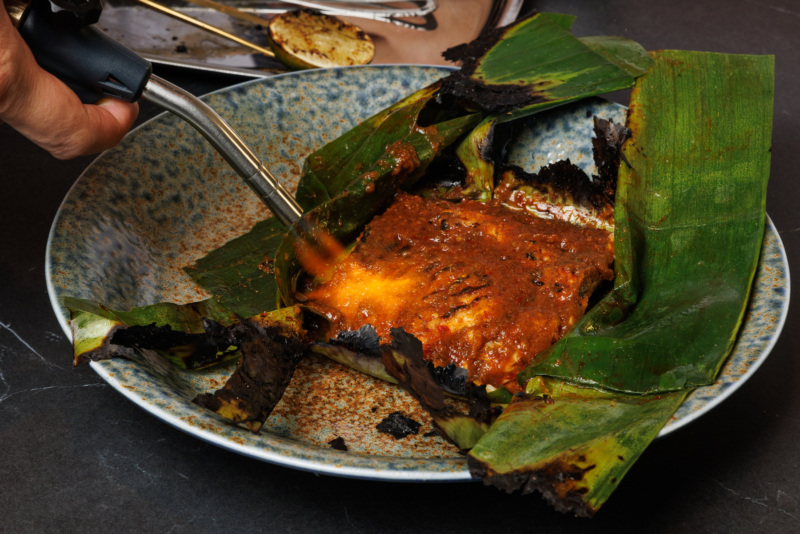
7. A Taste of Home, Reinvented
One dish that took the team quite a bit of time to research and develop is the grilled skate, which is inspired by sambal stingray, a dish that’s common in Singapore and Malaysia. “We had to go through a lot of R&D,” says corporate chef Adam Razali, a fellow Singaporean native of Malay heritage, who also worked with chefs Toh and Anuar in Singapore and Dubai. “The thought process to create the dish was two months alone, and the amount of chiles we had to go through to find that perfect balance with the seafood made it memorable. Back home, there are so many variations of sambal, so recreating that here and adjusting it to the American palate was the challenging part.”
That housemade sambal covers the skate (“Skate in the States is meaty and one of the best we have seen anywhere,” Razali adds), and then it all gets wrapped together in banana leaves and grilled over charcoal. “I haven’t seen a dish like this in New York yet,” he notes.
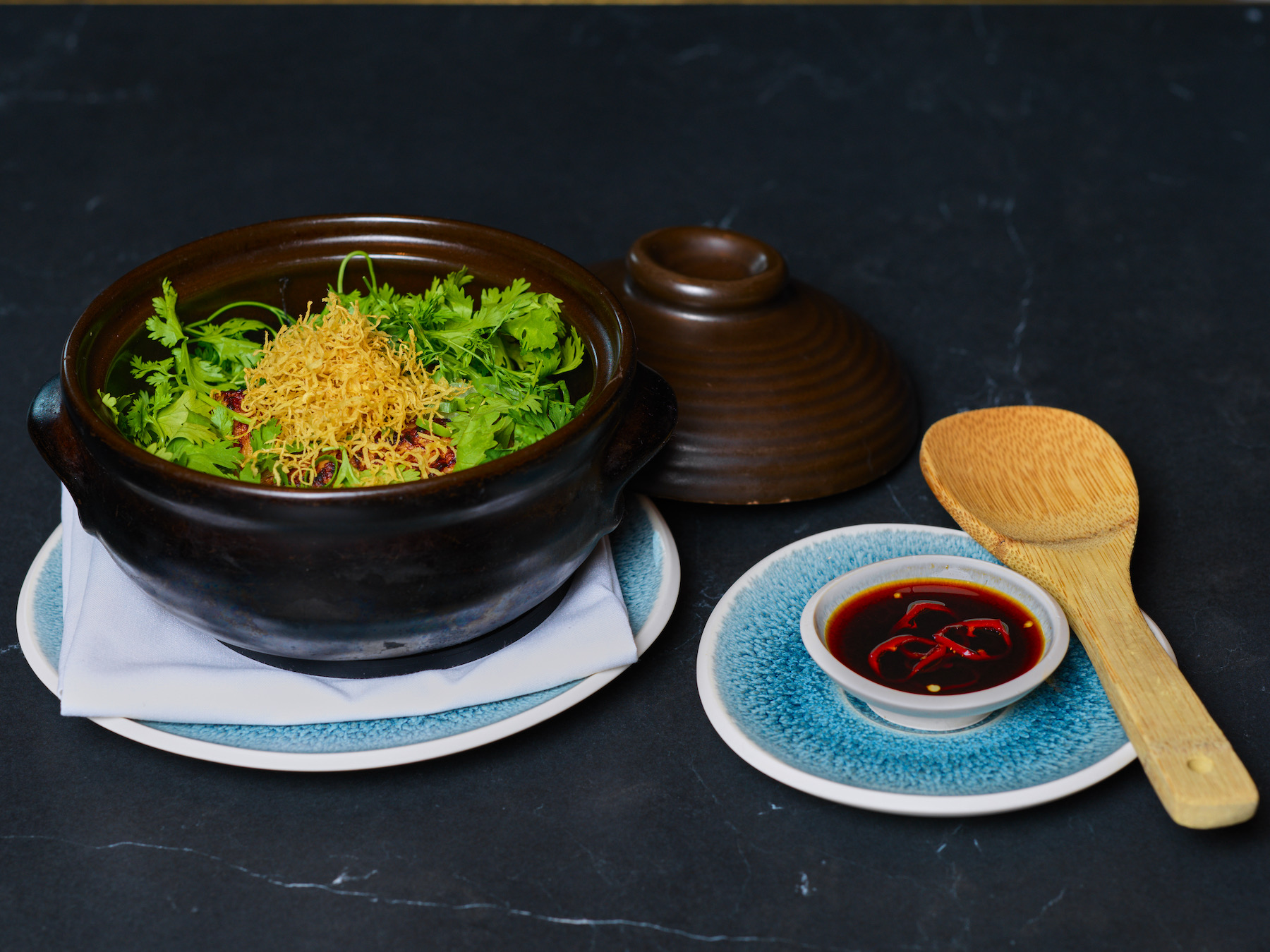
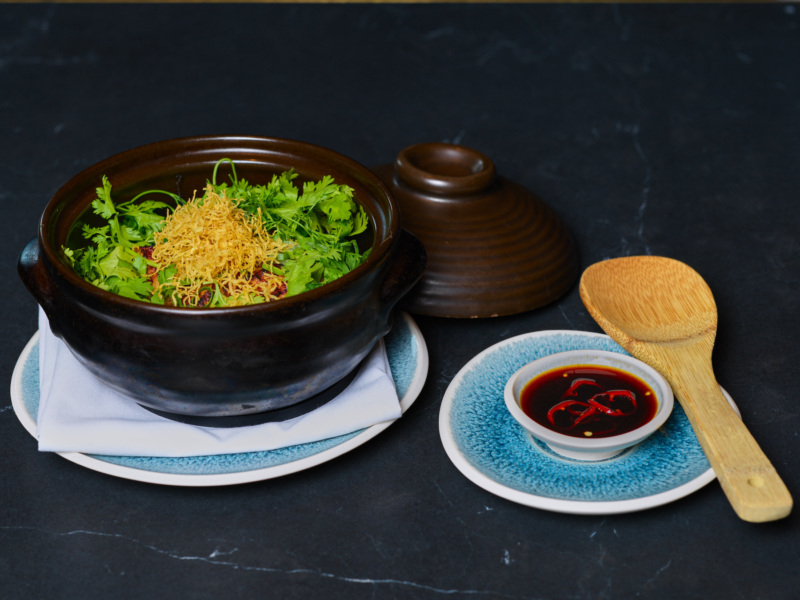
8. The Show Stopper
As soon as it arrives at the table, the black cod claypot dish draws everyone’s attention. “We mix the rice and fish tableside, and you get this beautiful effect when you open the top of the claypot,” explains executive chef Mark Yu. “You get the aroma, and then you hear the cracking sounds from the rice.” Inside the pot you’ll find generous portions of fresh black cod, mixed in with a jalapeno miso, ginger, and Japanese short-grain rice.
For Yu, this dish is also personal: “Our chef, Akmal, made this dish back in Dubai, too, and while it has Japanese flavors, I feel like it represents me because I’m Korean, and the claypot that we use to get the rice nice and crispy on the bottom is a dolsot (Korean clay pot).” It took Yu months to find just the right dolsot that he wanted to use for 53’s claypot dishes; he eventually found it from Grace Park of Crazy Korean Cooking, a New Jersey-based importer of Korean ingredients and cooking tools that also has a big following on YouTube and TikTok with their Korean cooking videos.
Yu, a Los Angeles native, whose parents are Korean but grew up in Brazil, says “Asian culture and Asian food were always part of my life, and what we’re doing here is modernizing Asian food a bit, but we also really want to keep the flavors and traditions, if that makes sense. It looks beautiful, but when you eat it, it tastes like something you’ll get at home.”
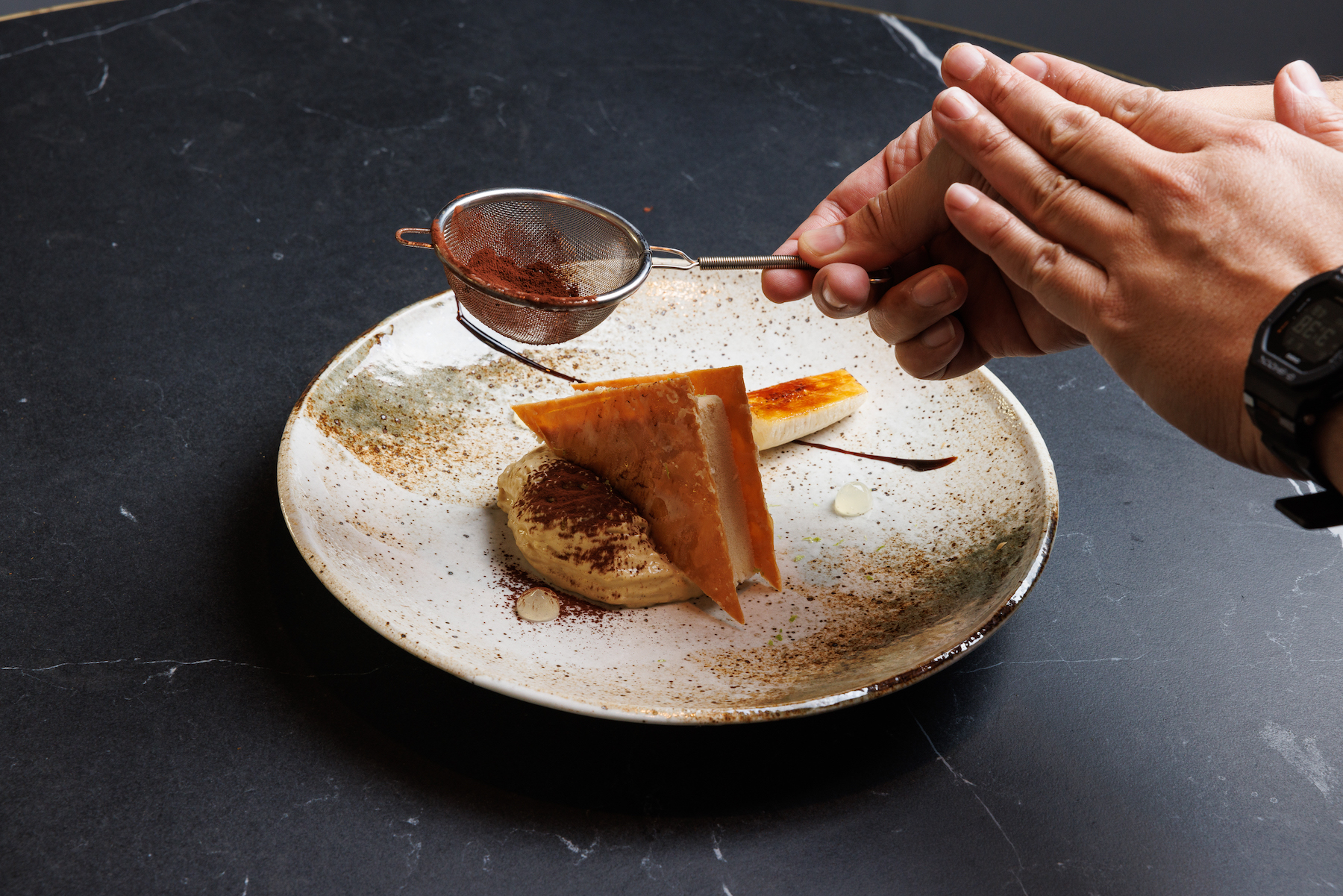
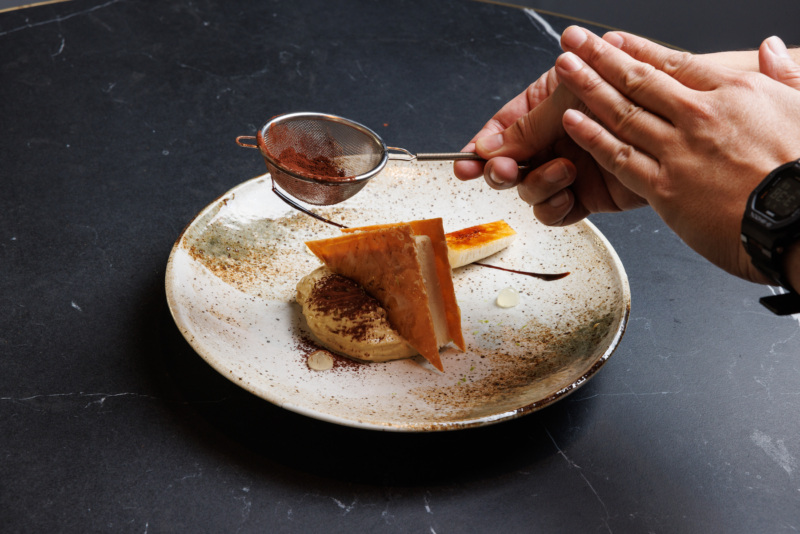
9. The Sweet Stuff
One ingredient you’ll see a few times on the dessert menu is gula melaka, an unrefined sugar that’s very prevalent in Southeast Asia. At 53, pastry chef Lily Hu transforms this hard-to-source ingredient into an ice cream that served by itself and is used for the base of the Napoleon, as a semifreddo. She credits Anuar with helping her better understand how to use gula melaka: “It’s something you need to cook down to really get that flavor profile,” she says. She forms it into a wet caramel before transforming it into an ice cream.
Hu, who worked with Yu at Pastis, says working at 53 has been an eye-opening experience in so many ways. She was born in Hangzhou, China, but grew up mostly in Fresh Meadows, Queens, and graduated from the International Culinary Center in New York. Working in restaurants runs in the family, too; her father used to own a restaurant in the space now occupied by Tim Ho Wan in the East Village.
“I guess I never really envisioned myself doing pastry with an Asian angle,” Hu notes. “You don’t see that very often with fine dining in the city; fine dining tends to be very Eurocentric, or sushi, if you look at the Michelin Guide. So, it was very interesting trying to imagine flavors or ideas that were very much things I’d seen more in my childhood but trying to bring into a fine dining concept.”
53 is open for lunch Tuesdays through Thursdays, and for dinner nightly beginning at 5 p.m.
Deanna Ting is Resy’s New York Editor. Follow her on Instagram and Twitter. Follow Resy, too.



